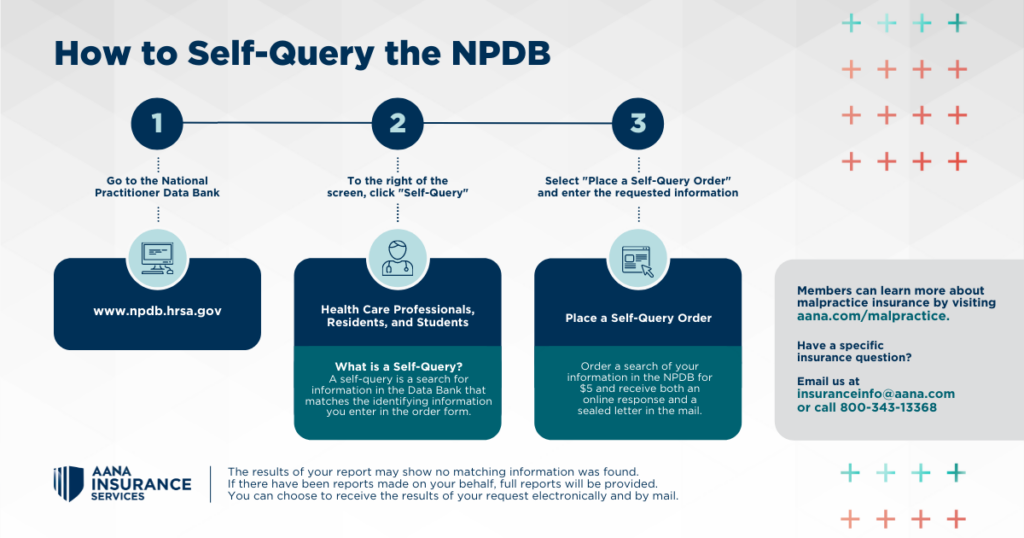The National Practitioner Data Bank (NPDB) was created by Congress as part of the Healthcare Quality Improvement Act of 1986. The purpose of the act was to improve the quality of patient care by encouraging healthcare-related organizations to identify those practitioners who engage in unprofessional behaviors. The NPDB carries out its role by collecting information and maintaining reports on medical malpractice payments, federal and state licensure and certification actions, adverse clinical privileges actions, adverse professional association/society membership actions, negative actions or findings by private accreditation organizations, and peer review organizations, healthcare-related criminal convictions and civil judgments, and exclusions from participation in a federal or state healthcare program (including Medicare and Medicaid exclusions). This information is collected on all licensed healthcare providers including CRNAs.
The most common type of report made to the NPDB is for medical malpractice settlements. In most cases, these reports are made by medical malpractice insurance companies, self-insured hospitals and other healthcare entities. By law, any medical malpractice payment made by a professional corporation or business must be reported. There is no minimum threshold; even a payment of $1 must be reported. Reports must be submitted to the NPDB and appropriate state licensing board within 30 days of a payment. Any medical malpractice payer that fails to report a payment is subject to a fine of up to $11,000.
Payments made by a healthcare provider from his or her personal funds are not reportable. In addition, a waiver of debt, such as writing off an outstanding medical bill when a patient complains about treatment, is not reportable.
The NPDB provides information to eligible entities so these entities can make decisions relating to employment, credentialing, licensure and clinical privileges. “Eligible entities” would include hospitals, state licensure boards, state and federal law enforcement agencies, and other healthcare entities. Information in the NPDB is not available to the public.

If you purchase your own malpractice insurance, you want to make sure your policy provides you with a consent-to-settle provision that prevents the insurance company from settling a claim without your consent. Many insurance companies limit your consent and force you into settling a claim even though there was no breach in the standard of care.
If your employer or facility provides your malpractice coverage, things become a bit more challenging. If you are involved in a malpractice claim, it is important to remember that an attorney appointed by your employer’s insurance company to defend you is not necessarily representing your interests and may simply decide to settle the case to avoid further expenses. If that is the case, that settlement will lead to a NPDB report. For this reason alone, you may want to consider purchasing your own malpractice insurance to supplement the coverage provided by your employer. AANA Insurance Services offers a low-cost, occurrence policy that provides you with your own legal representation to protect you, your interests, and your reputation in these sorts of situations.
Unless you have always purchased your own malpractice insurance, I would also strongly recommend that you self-query the NPDB every three to five years. If you have depended on malpractice coverage provided by either an employer or facility, you will have had no say in how any claim or lawsuit made against you was resolved. You may not even be aware that a claim was made against you or a settlement was made on your behalf. It is certainly not something you want to find out about when you are applying for your next job.
Learn About Your Policy Options
Contact Us
Phone: 800-343-1368
Email: insuranceinfo@aana.com
